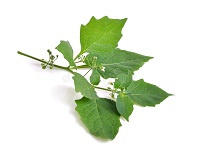Antimicrobial potential of various extract and fractions of leaves of Solanum
Keywords:
Solanum nigrum, antimicrobial activity, Resazurin, A. flavus, Minimum inhibitory concentrationAbstract
This study was carried out to evaluate the antimicrobial activity of methanolic extract and different fractions (n-butanol, ethyl acetate, chloroform and n-hexane) of S.nigrum leaves. The antimicrobial activity was determined by the disc diffusion method and minimum inhibitory concentration (MIC) against a panel of microorganisms (four bacterial strains, i.e P. multocida, E. coli, B. subtilis and S. aureus and three fungal strains, i.e A. flavus, A. niger and R. solani).The results indicated that leaf extract and fractions of S. nigrum were mildly potent as antibacterial agent. While Antifungal activity of S. nigrum leaves extract/fractions was poor.
References
Al-Qirim T, Syed M, Moyad S, Ghassan S
and Naheed B. Effect of Solanum nigrum
on immobilization stress induced
antioxidant defense changes in rat.
Research journal of Biological Sciences.
;3:1426–9.
Bhattacharjee SK. Handbook of Medicinal
Plants. 2001 3rd Ed. Pointer Pub. Jaipur
(India).
Edmonds JM and Chweya JA. Black
nightshades, Solanum nigrum L. and
related 5 species. Inernational Plant
Genetic Resources Institute, 1st Ed.
;Vol.1:86.
Ikeda T, Tsumagari H and Nohara T.
Steroidal oligoglycosides from Solanum
nigrum growing in Azerbaijan.
Biologicheskie Nauki. 1992;3:15–8.
Jainu M, Devi CSS. Antiulcerogenic and
ulcer healing effects of Solanum nigrum
(L.) on experimental ulcer models: Possible
mechanism for the inhibition of acid
formation. Journal of Labooratory and
Clinical Medicine 2005;98:417-27.
Jamil A, Shahid M, Khan MMH and
Ashraf M. Screening of some medicinal
plants for isolation of antifungal proteins
and peptides. Pakistan Journal of Botany
;39(1):211-221.
National Committee for Clinical
Laboratory Standards (NCCLS). Approved
Standard M2-A6, 5th ed. NCCLS: Wayne,
PA 1997.
Sarker SD, Nahar L and Kumarasamy Y.
Microtitre plate-based antibacterial assay
incorporating resazurin as an indicator of
cell growth, and its application in the in
vitro antibacterial screening of
phytochemicals. Methods. 2007;42:321-
Sashikumar JM, Remyam A and
Janardhanan K. Antimicrobial activity of
ethno medicinal plants of Nilgiri biosphere
reserve and Western Ghats. Asian Journal
of Microbiology Biotechnology and
Environmental Science. 2003;5:183-185.
Sheeba E. Antibacterial Activity of
Solanum Surattense Burm. F. Journal of
Science, Engineering and Technology.
;06(1):1-4.
Venkatesan D, Karrunakaran CM, Kumar
SS.Studies on phytochemical constituents,
functional group identification and
antimicrobial activity of Solanum nigrum
(Solanaceae). Bioorganic & Medicinal
Chemistry 2004;15:2528-2532.



